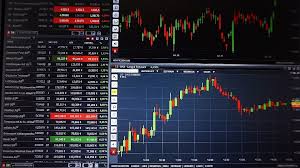
The Ultimate Guide to Forex Market Trading Hours
Understanding the forex market trading hours is crucial for any trader looking to maximize their potential profits. Whether you are a beginner or an experienced trader, knowing when the market is open and which trading sessions are the most active can significantly influence your trading strategies. In this guide, we will cover everything you need to know about forex market hours, including the major trading sessions, their characteristics, and how to use this information to your advantage. Additionally, if you are looking for reputable platforms to start trading, consider checking out the forex market trading hours Best Jordanian Brokers [1].
Understanding Forex Trading Hours
The forex market operates 24 hours a day, five days a week, and is divided into different trading sessions based on the major financial centers around the world. The primary trading sessions are the Sydney, Tokyo, London, and New York sessions. This continuous operation allows traders to engage in trading activities at any time of the day, depending on their location and trading preferences.
Major Trading Sessions
Each trading session has its unique characteristics influenced by the economic activities in the corresponding financial center:

Sydney Session
The Sydney session starts the trading week at 10 PM GMT on Sunday and ends at 7 AM GMT on Monday. It is known for lower trading volumes compared to other sessions, making it ideal for traders who prefer to trade with less volatility. However, some significant currency pairs, such as AUD/USD and NZD/USD, may show increased activity due to the economic data releases from the Asia-Pacific region.
Tokyo Session
The Tokyo session runs from 12 AM to 9 AM GMT. It is characterized by its increased liquidity compared to the Sydney session, especially for pairs involving the Japanese yen. Traders typically focus on key economic indicators released by Japan, such as the Bank of Japan’s monetary policy decisions and GDP figures, which can lead to sudden price movements.
London Session
The London session is one of the most active trading sessions and operates from 8 AM to 5 PM GMT. This session witnesses the highest trading volume and activity, as it overlaps with both the Tokyo and New York sessions. Major economic reports from the UK and the European Union are often released during this time, attracting substantial market attention and generating significant price movements for various currency pairs.
New York Session
Opening at 1 PM GMT and closing at 10 PM GMT, the New York session is another vital trading window characterized by high volatility and substantial trading volume. This session overlaps with the London session for a few hours, allowing traders to capitalize on increased market liquidity. Key economic indicators, such as the Non-Farm Payroll (NFP) and Consumer Price Index (CPI), have a significant impact during this time.
Overlap of Trading Sessions

Understanding the overlaps between different trading sessions is essential for maximizing trading opportunities. The highest volatility and trading volume typically occur during the overlap of the London and New York sessions (from 1 PM to 5 PM GMT). Traders often seek to capitalize on favorable price movements during these periods, which can lead to profitable trading opportunities.
Determining the Best Trading Hours
When determining the best trading hours for your strategy, consider the following factors:
- Major Currency Pairs: Focus on currency pairs that are actively traded during the sessions you plan to trade. For example, the AUD/USD and NZD/USD pairs are more active during the Sydney session, while EUR/USD and GBP/USD are popular during the London session.
- Market Volatility: High volatility often presents more opportunities for price movements and potential profits. Traders may prefer to trade during the overlaps of major sessions.
- Personal Schedule: Consider your own availability and trading style. Some traders may prefer to trade during the quieter Sydney session, while others might thrive in the fast-paced environments of London and New York.
How to Adapt Your Trading Strategy
Adapting your trading strategy to fit the forex market’s trading hours can significantly enhance your chances of success. Here are some tips to consider:
- Plan Your Trades: Based on the time you plan to trade, design your trading strategy around the significant market events that are likely to occur during that session.
- Utilize Technical Analysis: Employ technical indicators to identify potential entry and exit points, especially during periods of high volatility.
- Stay Informed: Keep track of economic news releases and geopolitical events that may impact the market during the trading hours you focus on.
Conclusion
Understanding the forex market trading hours and leveraging this knowledge can greatly enhance your trading performance. By aligning your trading activities with the peak trading sessions and being mindful of market volatility, you can position yourself to take advantage of profitable opportunities. Whether you are a beginner or an experienced trader, adapting your trading strategy to the market’s rhythm is essential for long-term success.